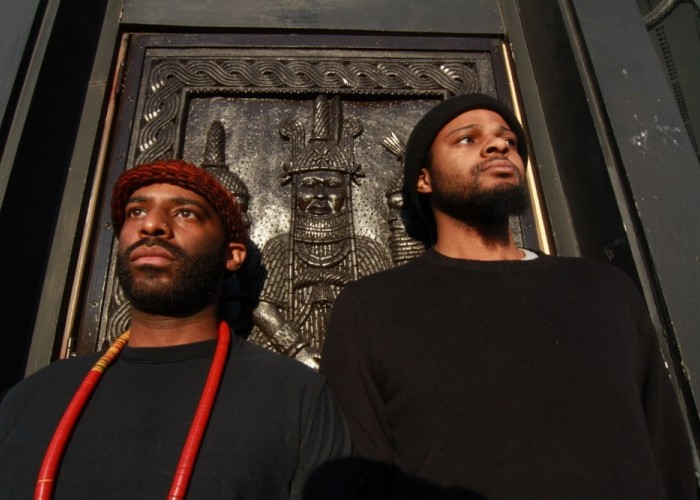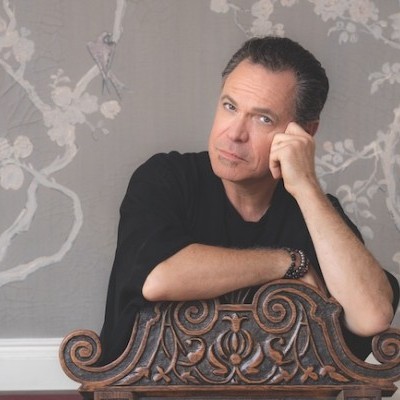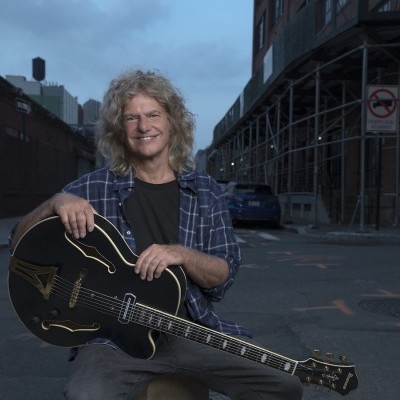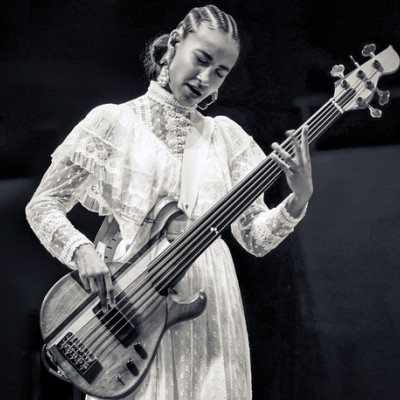Oct 28, 2025 10:47 AM
In Memoriam: Jack DeJohnette, 1942–2025
Jack DeJohnette, a bold and resourceful drummer and NEA Jazz Master who forged a unique vocabulary on the kit over his…

Warren “Trae” Crudup III (left) and Luke Stewart released Blacks’ Myths (Atlantic Rhythms) on June 25.
(Photo: Thomas Sayers Ellis)Through an internship at the National Coalition to Abolish the Death Penalty, Stewart came to D.C. in 2005. Right before the internship began, though, Hurricane Katrina ravished the Mississippi Gulf Coast. “So, basically, I was left with a choice to either stay in Mississippi and help out, or move on. I chose to move on,” he said.
Stewart soon transferred to American University, where he studied audio engineering. Coming to D.C. became a transformative experience, particularly as he explored the city’s vibrant U Street, which was being revitalized after decades of neglect following 1968 riots, but before its current cultural erosion via rapid gentrification. At Twins Jazz Lounge, he attended his first hard-bop concert: saxophonist Sonny Fortune leading a combo of D.C.-based musicians (drummer Nasar Abadey, bassist James King and pianist Bob Butta).
“That experience, and seeing U Street at that time, were pivotal moments for me,” Stewart explained. “Just seeing prominent-looking black people running things. There was a mad [number] of black folks around U Street—looking good and having a good time. Then you go inside a lot of the venues, and you’ll see some really deep cultural, high-level profundity going on. And then to be accepted in all of that. Mississippi is the blackest state in the U.S., but I felt like an outsider, because I wasn’t deep enough into sports or church.”
In addition to the D.C. jazz scene, WPFW amplified Stewart’s burgeoning jazz knowledge. While working at a Barnes & Noble, he befriended one of the station’s hosts, Jamal Muhammad. Stewart soon applied for an internship at the station and forged an apprenticeship under Muhammad.
“At that time, more than anybody, [Jamal] took my perspective of jazz history to a completely other level,” Stewart said. “The stuff that he turned me onto, I’m just now hearing other people talk about—like pianist Hasaan ibn Ali.”
Through the encouragement of Bobby Hill, then WPFW’s station manager, Stewart began hosting his own late-night jazz programming. Hill also enhanced Stewart’s jazz knowledge by loaning him various books, some touching on the legacies of AACM and the Black Arts Group. The self-reliant, community-based aspects of those associations inspired, in part, Stewart’s interests in concert presenting. Perhaps, another significant influencer was the city’s D.I.Y. ethos, which thrived through its punk, hardcore, go-go, hip-hop and indie scenes.
In 2009, while playing with the D.C.-based rock act Laughing Man, Stewart started his Loft Jazz concert series at the now-defunct Golden Leaf studio.
However, it was a chance meeting with Giovanni Russonello—now a DownBeat contributor and New York Times staffer—in 2010 at Virginia’s Rosslyn Jazz Festival that Stewart’s concert presenting became an integral part of CapitalBop. Russonello, who had just graduated from Tufts University, had launched CapitalBop’s website. He was canvassing the Rosslyn Jazz Festival, looking for contributing writers, and Stewart was one of the few who followed through.
In a serendipitous moments, Stewart’s first writing assignment was to cover a concert by Marshall Allen and the Sun Ra Arkestra at Twins Jazz.
“Turned out the band needed a bass player,” Stewart said. “They asked me to play bass, so I ended up having to write about the show from a musician’s perspective. My first writing gig with CapitalBop was also one of my first avant-garde jazz gigs.”
During the two weeks prior to the Goethe-Institut gig, Stewart donned the hat of a concert presenter with CapitalBop as part of the DC Jazz Fest. For the past seven years, the nonprofit has been curating the Loft Jazz concert series in partnership with the festival. This year, the series included performances by trumpeter Jaimie Branch, pianist Hope Udobi, saxophonist Oliver Lake, and guitarist Jeff Parker. [Full disclosure: I deejayed at the Jeff Parker concert.]
As much as Stewart views D.C. as the birthplace of his artistic and professional rise, his consummate talents threaten to outgrow the city. He’s been performing regularly in New York, as well as in Europe. He’s also completing a master’s degree in arts management and entrepreneurship at the New School in New York. “I really want to stay in D.C.,” Stewart said when asked if he’s planning a move to the Big Apple. “But it’s getting harder.” DB

Jack DeJohnette boasted a musical resume that was as long as it was fearsome.
Oct 28, 2025 10:47 AM
Jack DeJohnette, a bold and resourceful drummer and NEA Jazz Master who forged a unique vocabulary on the kit over his…

“Think of all the creative people I’m going to meet and a whole other way of thinking about music and a challenge of singing completely different material than I would have sung otherwise to my highest level in dedication to the moment,” Elling says about his Broadway run.
Sep 9, 2025 1:18 PM
Kurt Elling was back at home in Chicago, grabbing some family time in a late-June window between gigs. Sporting a smile…

Pat Metheny will perform with his Side-Eye III ensemble at Big Ears 2026 in Knoxville, Tennessee, next March.
Sep 9, 2025 12:19 PM
Big Ears has announced the lineup for its 2026 festival, which will take place March 26–29 and include 250…

“[That’s] the thing of the beboppers,” Bradford said. “These guys were important for not only playing that wonderful music, but they knew a sort of social stance, you see?”
Sep 9, 2025 1:07 PM
It was a calm, balmy, near-perfect evening in Westwood, California, not far from UCLA, in the expansive courtyard at…

Esperanza Spalding closed an audacious Chicago Jazz Festival set with “Endangered Species.”
Sep 9, 2025 11:50 AM
The 45th Chicago Jazz Festival kicked off its headline events with two erudite individuals, Esperanza Spalding and…